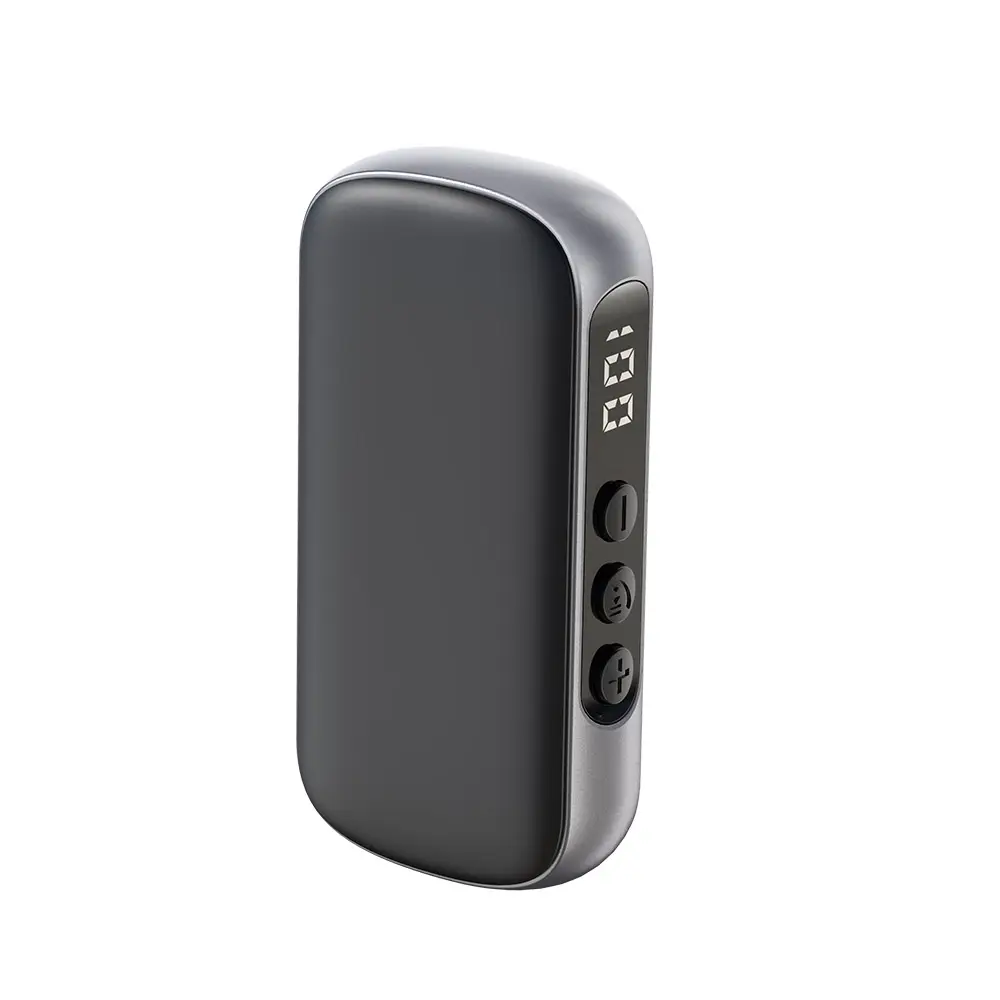A evolução da tecnologia de áudio trouxe-nos uma conveniência sem fios incrível, ainda que muitos de nós continuem a valorizar os nossos sistemas estéreo clássicos pela sua qualidade sonora superior. Um Receptor Bluetooth serve como a ponte perfeita entre esses dois mundos, permitindo transmitir música sem fios a partir dos seus dispositivos modernos para o seu equipamento de áudio vintage. Este dispositivo inovador abre um mundo de possibilidades para os amantes de música que desejam preservar o seu investimento em sistemas de som de alta qualidade, ao mesmo tempo que adotam a conveniência do streaming digital.
Pense em um receptor Bluetooth como um tradutor tecnológico – ele recebe os sinais sem fio do seu smartphone, tablet ou computador e os converte em sinais analógicos que seu sistema de som tradicional entende. Este dispositivo simples, porém poderoso, revolucionou a forma como interagimos com nossos equipamentos de áudio antigos, dando nova vida a sistemas que, de outra forma, poderiam ter sido relegados ao sótão.
Em seu núcleo, um receptor Bluetooth contém circuitos sofisticados que gerenciam o protocolo de comunicação sem fio. O dispositivo inclui um chip Bluetooth que recebe os sinais de áudio digitais, um conversor de digital para analógico (DAC) que transforma esses sinais em formato analógico e estágios de saída que transmitem o áudio convertido para o seu sistema de som. Os receptores Bluetooth modernos suportam codecs de áudio avançados, como aptX e AAC, garantindo uma transmissão de som de alta qualidade que pode satisfazer até os audiophiles mais exigentes.
A integração desses componentes permite a transmissão sem fio contínua, mantendo a fidelidade de áudio que tornava seu sistema estéreo original especial. Muitos receptores Bluetooth também possuem conectividade multiponto, permitindo emparelhar vários dispositivos simultaneamente para maior conveniência.
Os receptores Bluetooth atuais são equipados com várias opções de saída para garantir compatibilidade com praticamente qualquer sistema de áudio. O mais comum é encontrar saídas RCA para conexões estéreo padrão, mas muitos modelos também incluem saídas auxiliares de 3,5 mm e até portas ópticas digitais. Essa versatilidade significa que seu receptor Bluetooth pode se conectar a tudo, desde amplificadores antigos até barras de som modernas.
A gama de opções de conexão estende-se também ao domínio sem fios, com muitos modelos atuais suportando Bluetooth 5.0 ou superior, oferecendo maior alcance e estabilidade em comparação com versões mais antigas. Essa conectividade aprimorada garante que sua música seja transmitida suavemente, sem interrupções, mesmo quando o dispositivo de origem está em outro cômodo.

Adicionar um receptor Bluetooth à sua configuração dá acesso imediato ao vasto mundo dos serviços de streaming. Seja você fã de Spotify, Apple Music, Tidal ou qualquer outra plataforma, agora pode desfrutar de milhões de músicas por meio das suas caixas acústicas existentes. Essa transformação traz para as suas mãos a conveniência das bibliotecas modernas de música, preservando ao mesmo tempo as características sonoras quentes e ricas do seu sistema analógico.
A capacidade de transmitir áudio de alta qualidade sem fio também significa que você pode organizar festas sem precisar ficar preso ao seu sistema de som, ou permitir que amigos compartilhem facilmente suas músicas pelos seus alto-falantes. Esse aspecto social acrescenta uma nova dimensão à sua experiência auditiva que não era possível com configurações de áudio tradicionais.
A adição de um receptor Bluetooth elimina a necessidade de conexões físicas entre a sua fonte de música e o seu sistema de som. Essa liberdade sem fio permite uma instalação mais limpa, com menos cabos, e a flexibilidade de posicionar os componentes de áudio onde desejar. Você pode manter seu telefone no bolso enquanto controla sua música, ou deixar seu laptop na mesa enquanto transmite áudio para alto-falantes do outro lado da sala.
Muitos receptores Bluetooth também possuem recursos de reconexão automática, o que significa que eles se conectarão automaticamente ao seu dispositivo usado anteriormente assim que ele estiver dentro do alcance. Essa experiência contínua torna seu sistema de áudio clássico tão conveniente quanto qualquer alto-falante sem fio moderno.
Para obter o melhor desempenho do seu receptor Bluetooth, o posicionamento adequado é crucial. Posicione o dispositivo longe de fontes potenciais de interferência, como roteadores Wi-Fi, telefones sem fio ou fornos de micro-ondas. Elevar o receptor e garantir que haja uma linha de visão clara até a sua posição habitual de escuta pode ajudar a manter uma conexão estável e qualidade de áudio ideal.
Dedique um tempo para experimentar diferentes opções de posicionamento e configurações tanto nos seus dispositivos de origem quanto no próprio receptor. Muitos receptores Bluetooth oferecem ajustes de ganho e opções de equalizador que podem ajudá-lo a obter o som perfeito para a sua configuração específica.
Embora os receptores Bluetooth sejam geralmente confiáveis, manter o desempenho ideal requer alguns cuidados básicos. Mantenha o dispositivo limpo e livre de poeira, garanta ventilação adequada para evitar superaquecimento e verifique periodicamente atualizações de firmware que possam melhorar a funcionalidade ou adicionar novos recursos.
Problemas comuns, como quedas de conexão ou áudio interrompido, podem frequentemente ser resolvidos ao reaparelhar os dispositivos, atualizar o software ou ajustar a posição do receptor. Compreender essas etapas básicas de solução de problemas ajudará você a manter uma experiência de escuta contínua.
Receptores Bluetooth modernos com DACs de alta qualidade e codecs de áudio avançados podem manter uma excelente qualidade de som. Embora alguma compressão seja inerente à transmissão Bluetooth, a maioria dos ouvintes não notará uma diferença significativa, especialmente com receptores de alta qualidade que utilizam aptX ou codecs semelhantes de alta resolução.
A distância típica para um receptor Bluetooth é de cerca de 30 pés (10 metros) com visão direta. No entanto, modelos com Bluetooth 5.0 ou superior podem alcançar distâncias de até 120 pés (40 metros) em condições ideais. Paredes e outros obstáculos podem reduzir essa distância.
Muitos receptores Bluetooth modernos suportam emparelhamento multiponto, permitindo que você conecte múltiplos dispositivos ao mesmo tempo. Embora apenas um dispositivo possa transmitir ativamente de cada vez, é possível alternar facilmente entre os dispositivos pareados sem precisar reconectá-los sempre.
 Notícias em Destaque
Notícias em Destaque
Direitos Autorais © 2024 Shenzhen GXY Electronic Co.,LTD Todos os Direitos Reservados Política de privacidade